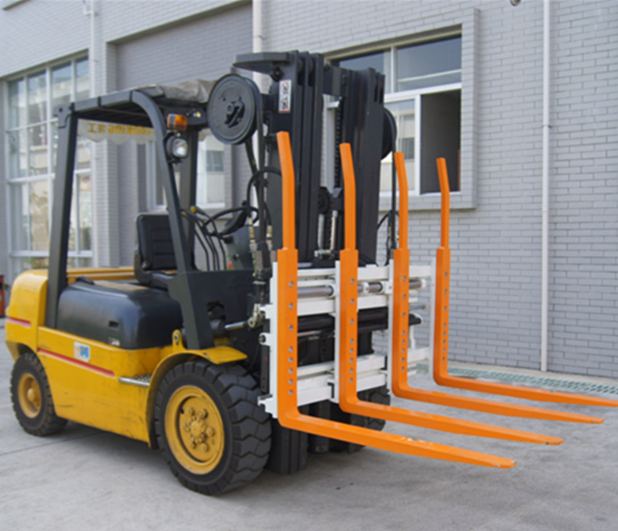When Is It Time to Replace Forklift Attachments?
Forklift attachments play a vital role in enhancing the versatility and functionality of forklifts in various industrial and material handling applications. These attachments come in different forms, from forks and clamps to booms and hoppers, designed to suit specific tasks. However, like any equipment, forklift attachments have a limited lifespan and may require replacement over time. In this article, we will explore when it's time to consider replacing forklift attachments and the key factors to consider during the evaluation process.
1. Wear and Tear
Wear and tear are common issues that affect the performance and safety of forklift attachments. Over time, attachments may show visible signs of wear, such as cracked or bent components, rust, or excessive wear on fork tips or clamping surfaces. Excessive wear can compromise the structural integrity of the attachment, making it unsafe for operation.
Signs of Wear and Tear:
- Cracks or Breaks: Cracks in structural components like frames or arms can weaken the attachment, posing safety risks.
- Bent or Distorted Parts: Bent or distorted components may affect the attachment's functionality and alignment.
- Corrosion: Rust and corrosion can weaken the attachment, leading to premature failure.
- Excessive Wear on Fork Tips: For fork attachments, wear on the fork tips may reduce load stability and lifting capacity.
Inspect the attachment regularly for signs of wear and tear, and consider replacement if any of these issues are identified during inspections.
2. Reduced Performance
As forklift attachments age, their performance may deteriorate. Reduced performance can manifest in various ways, including decreased load capacity, diminished maneuverability, or inefficiencies in material handling operations.
Performance Issues to Look For:
- Lifting Capacity: If an attachment can no longer handle loads up to its rated capacity, it's a clear sign of reduced performance.
- Leakage: For hydraulic attachments, fluid leaks can compromise functionality and may indicate the need for repairs or replacement.
- Loss of Precision: Attachments like clamps or rotators may lose their precision, making it challenging to handle loads with accuracy.
- Reduced Maneuverability: If the attachment hampers the forklift's maneuverability, it can lead to inefficient operation and safety risks.
When you notice any of these performance issues, it's time to assess whether the attachment should be replaced to maintain operational efficiency and safety.
3. Frequent Repairs and Downtime
Attachments that require frequent repairs or cause prolonged downtime due to malfunctions can impact productivity and increase operational costs. Continuous repairs not only incur expenses but also disrupt workflow and lead to operational inefficiencies.
Key Indicators of Frequent Repairs:
- Recurring Mechanical Failures: If the attachment experiences repeated mechanical failures, it may be more cost-effective to replace it.
- Increased Downtime: Frequent attachment-related downtime can hinder productivity and result in missed deadlines.
- High Maintenance Costs: When the cumulative cost of maintenance and repairs exceeds the value of the attachment, it's a strong signal that replacement should be considered.
To maintain operational efficiency and reduce costs, evaluate the cost-effectiveness of ongoing repairs versus investing in a new attachment.
4. Compatibility Issues
As forklift models and attachment technologies evolve, compatibility issues may arise. Older attachments may not be compatible with newer forklift models, or changes in industry standards may necessitate updates to attachments.
Compatibility Concerns:
- Obsolete Attachments: Attachments that are no longer compatible with the forklifts in use can become a liability and hinder operations.
- Safety and Regulatory Compliance: Changes in safety standards and regulations may require updates or replacements to ensure compliance.
- New Features and Technologies: Modern attachments may offer enhanced features and technologies that improve performance and safety.
Assess the compatibility of your attachments with your forklift fleet and evaluate the potential benefits of upgrading to newer, more compatible attachments.
5. Safety Concerns
Safety is of paramount importance in material handling operations. Damaged or outdated attachments can pose significant safety risks to both operators and the workplace. Safety concerns should be a compelling reason to consider attachment replacement.
Safety Considerations:
- Structural Integrity: Any doubts about the structural integrity of the attachment should trigger replacement considerations to prevent accidents.
- Load Stability: Attachments that compromise load stability can lead to dangerous situations, especially when handling heavy or fragile loads.
- Operator Safety: Malfunctioning attachments can endanger the safety of forklift operators and personnel working in the vicinity.
Prioritize safety above all else and replace attachments that present safety risks, even if other criteria may not justify immediate replacement.
6. Technological Advancements
Advancements in technology have led to the development of more efficient and productive forklift attachments. Newer attachments may offer features such as improved ergonomics, enhanced control systems, better load management, and compatibility with advanced telematics systems. Assessing the potential benefits of adopting technologically advanced attachments can drive replacement decisions.
Advancements to Consider:
- Automation and Integration: Modern attachments may support automation and integration with
warehouse management systems for optimized operations.
- Precision and Efficiency: Newer attachments may offer higher precision and efficiency in handling tasks, reducing the risk of damage to products.
- Data and Telematics: Attachments with telematics capabilities can provide valuable data for operational analysis and optimization.
When evaluating whether to replace attachments, explore how technological advancements can positively impact your operations and improve overall efficiency.
7. End of Lifecycle
Attachments, like any equipment, have a finite lifespan. Manufacturers typically provide guidelines regarding the expected lifecycle of their attachments. When an attachment reaches the end of its expected lifespan, it's prudent to consider replacement.
Factors Indicating the End of Lifecycle:
- Manufacturer Recommendations: If the manufacturer specifies a limited lifespan for the attachment, it's a strong indicator for replacement.
- Excessive Use: Attachments used intensively or beyond their recommended usage may reach their end of lifecycle sooner.
- Obsolete Design: Attachments with outdated designs or features may no longer meet the operational needs of the facility.
To ensure operational reliability and safety, adhere to manufacturer guidelines regarding the attachment's lifecycle and consider replacement accordingly.
8. Cost-Benefit Analysis
Before deciding to replace a forklift attachment, conduct a thorough cost-benefit analysis. Consider factors such as the cost of the new attachment, installation, and potential productivity gains, as well as any ongoing maintenance savings. Weigh these against the costs of continuing to use the existing attachment with potential repairs, downtime, and safety risks.
A cost-benefit analysis can provide a clear understanding of whether replacement is a financially prudent decision.
Conclusion
Forklift attachments are integral to efficient material handling operations, but they are not immune to wear and aging. Assessing the condition and performance of attachments is essential to maintaining operational efficiency, safety, and compliance with industry standards. By considering the factors mentioned in this guide and conducting regular inspections, you can determine when it's time to replace forklift attachments and make informed decisions that benefit your organization in the long run.
216
0
0


Comments
All Comments (0)